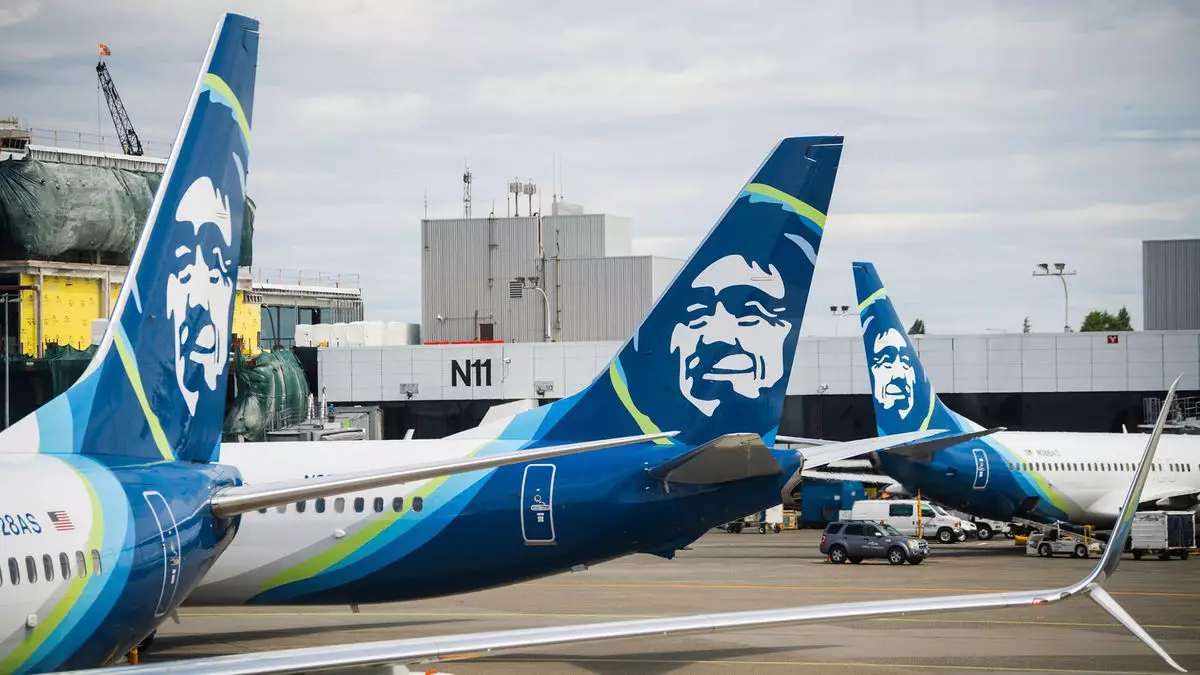Alaska Airlines experienced a momentary halt in its flight operations at Seattle-Tacoma International Airport due to significant disruptions caused by an unspecified technology issue. This incident occurred on a busy Sunday evening, a peak travel time that heightened the stress levels of both passengers and airline staff. By around 10 p.m. local time, the airline announced through its official social media channels that the issue had been resolved. However, the exact nature of the technology problem remained vague, leaving customers in suspense and raising questions about the airline’s digital infrastructure.
In the face of customer dissatisfaction stemming from delays and issues with the airline’s app and website, Alaska Airlines issued an apology and encouraged travelers to verify their flight status prior to heading to the airport. This communication, although well-intended, illustrates a recurring challenge airlines often encounter: managing disruptions transparently while offering timely solutions. Travelers are understandably anxious during delays, and a lack of clear communication can amplify their frustrations. While the airline did provide updates, more proactive outreach might have mitigated the dissatisfaction of affected passengers.
The recent disruptions experienced by Alaska Airlines cannot be viewed in isolation. The airline is operating within a larger context of increasing cyber vulnerabilities faced by key infrastructure, as highlighted by a previous incident involving Seattle-Tacoma Airport. Just days before Alaska Airlines’ technology problem, a cyberattack had exposed sensitive information, leading to phishing demands from hackers and a troubling climate of uncertainty about digital safety in the airport arena. The Port of Seattle’s decision to refuse a ransom demand from cybercriminals exemplifies a broader cybersecurity strategy, but raises concerns about the potential repercussions for operations and customer trust.
For travelers, such technology issues and cybersecurity threats can cause cascading effects—missed connections, lost luggage, and overbooked flights. With Seattle serving as a crucial hub for Alaska Airlines as well as other major carriers, the reliability of air travel in this region is essential. Passengers are not only relying on the airplanes to transport them but are increasingly reliant on integrated technology systems for seamless travel. Therefore, ongoing technological resilience becomes critical for the operational integrity of airlines in the face of frequent cyber threats.
As Alaska Airlines navigates through these tumultuous times, a thorough reassessment of its technological frameworks and improved communication strategies with its customers will be paramount. The travel industry is continually evolving, with increasing reliance on technology that can sometimes fail unexpectedly. Addressing these issues proactively, including enhancing cyber defenses and streamlining passenger communication during disruptions, can help restore customer faith and enhance overall travel experiences. The challenges faced by Alaska Airlines serve as a reminder that in today’s interconnected world, the stability of one can significantly affect many.

